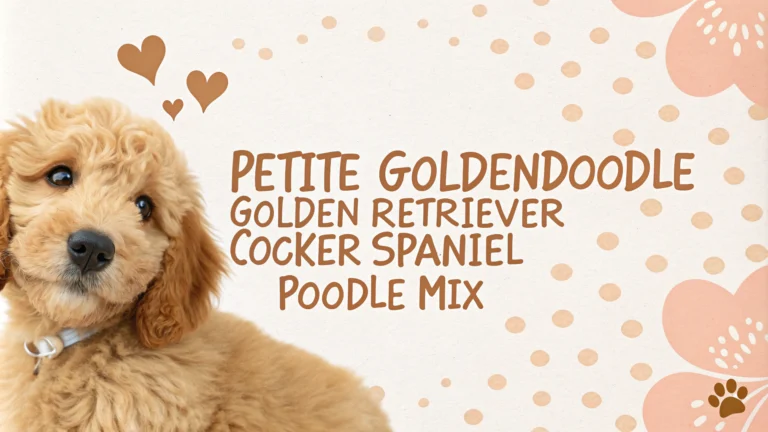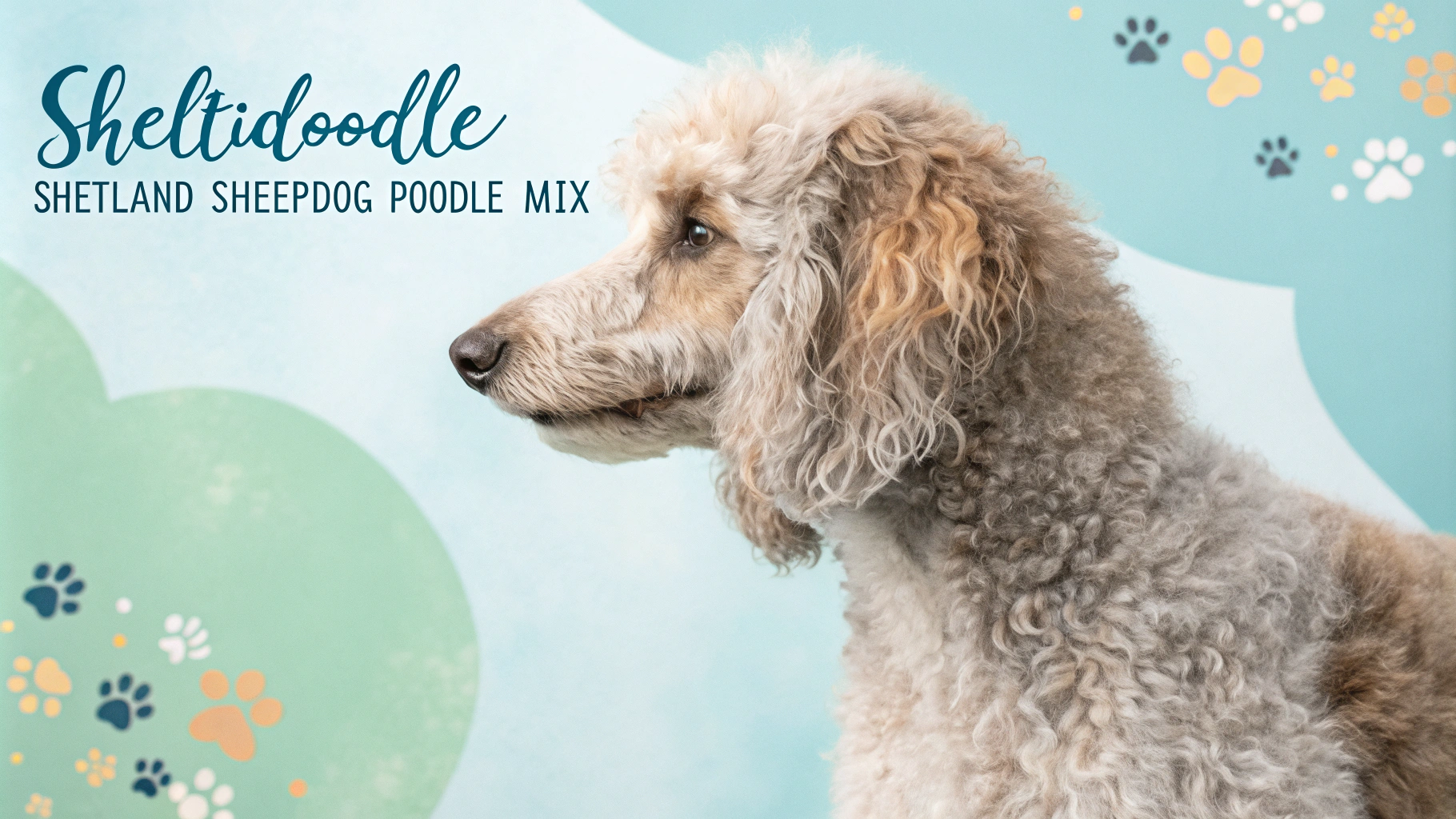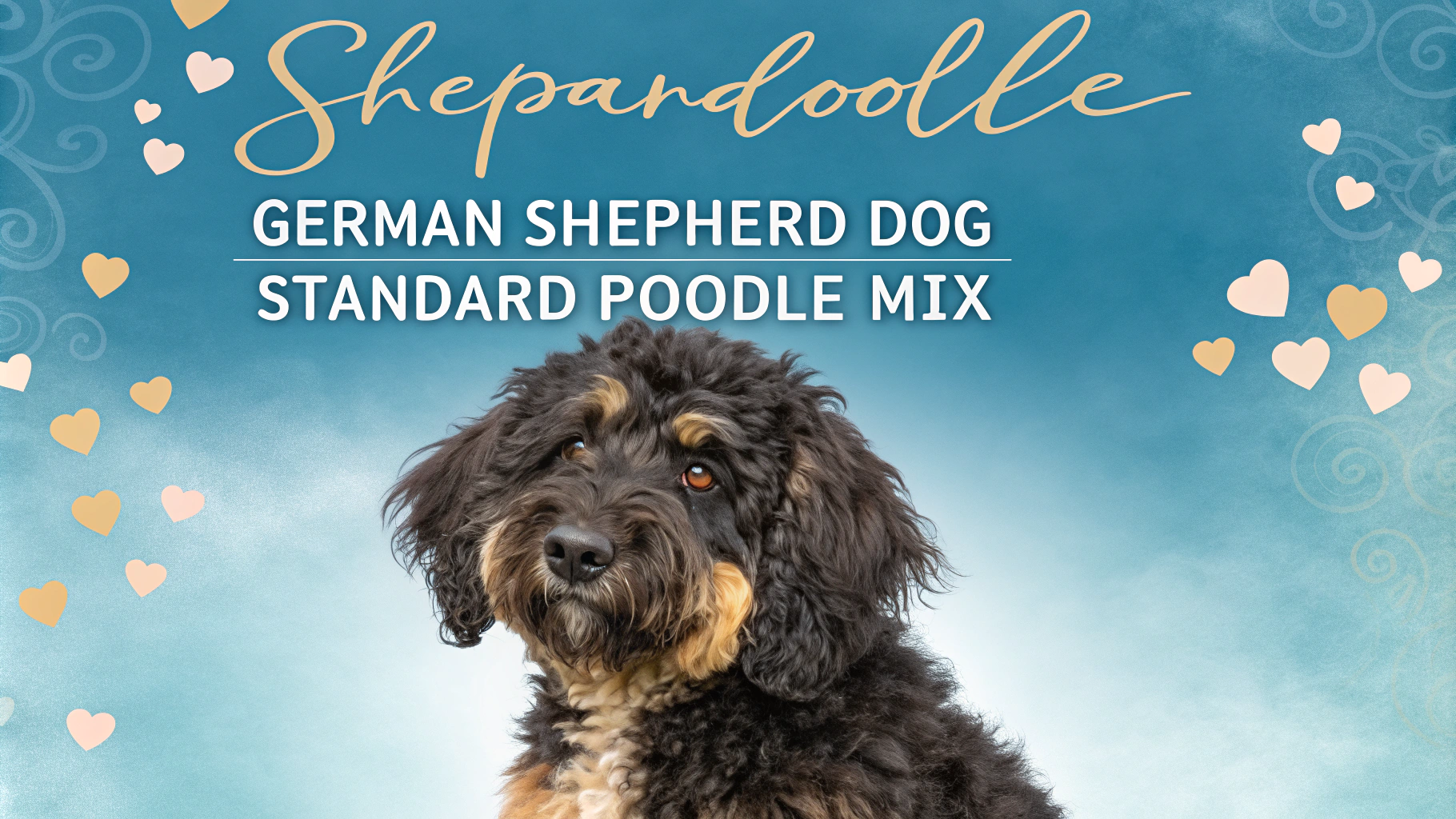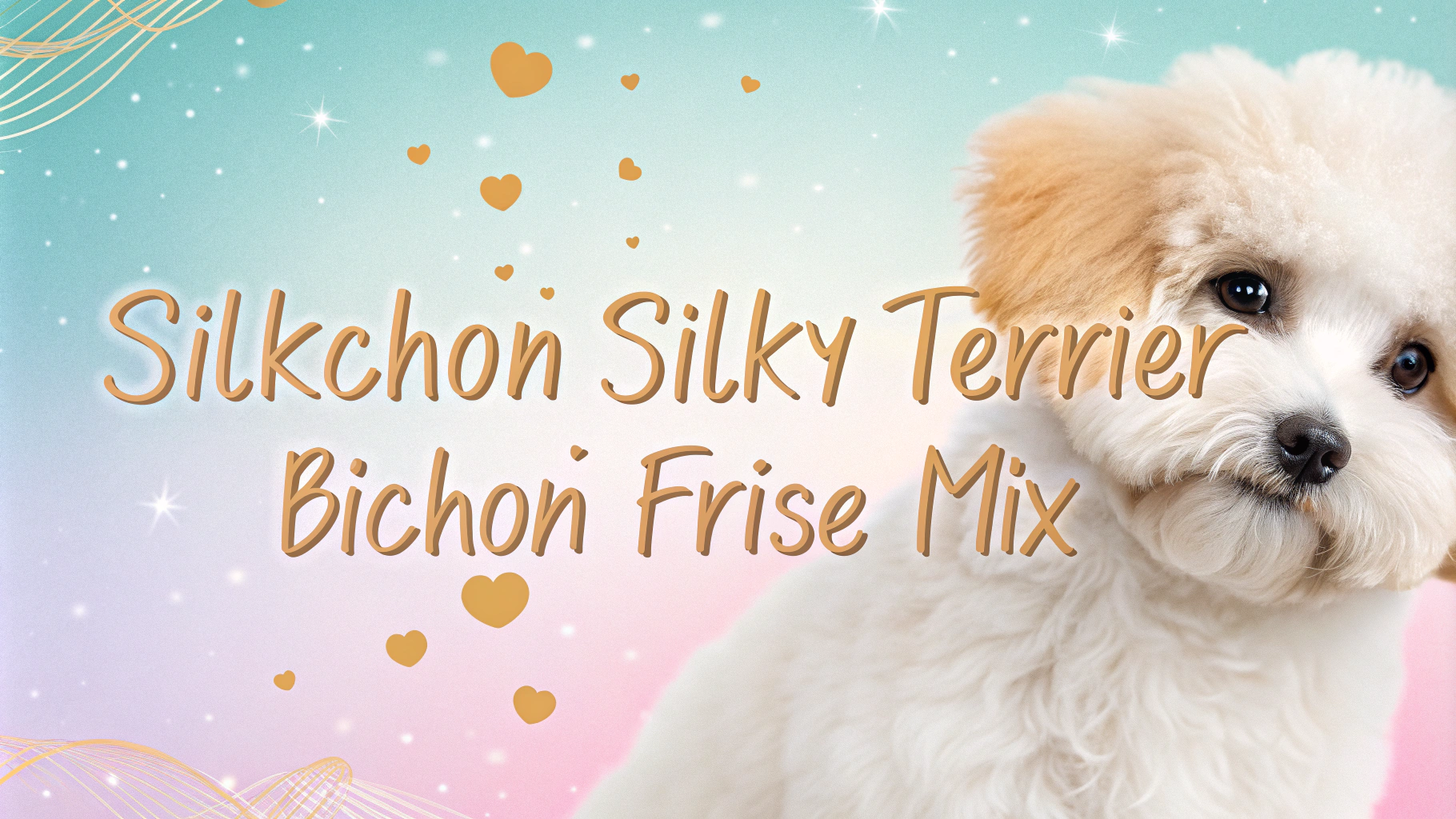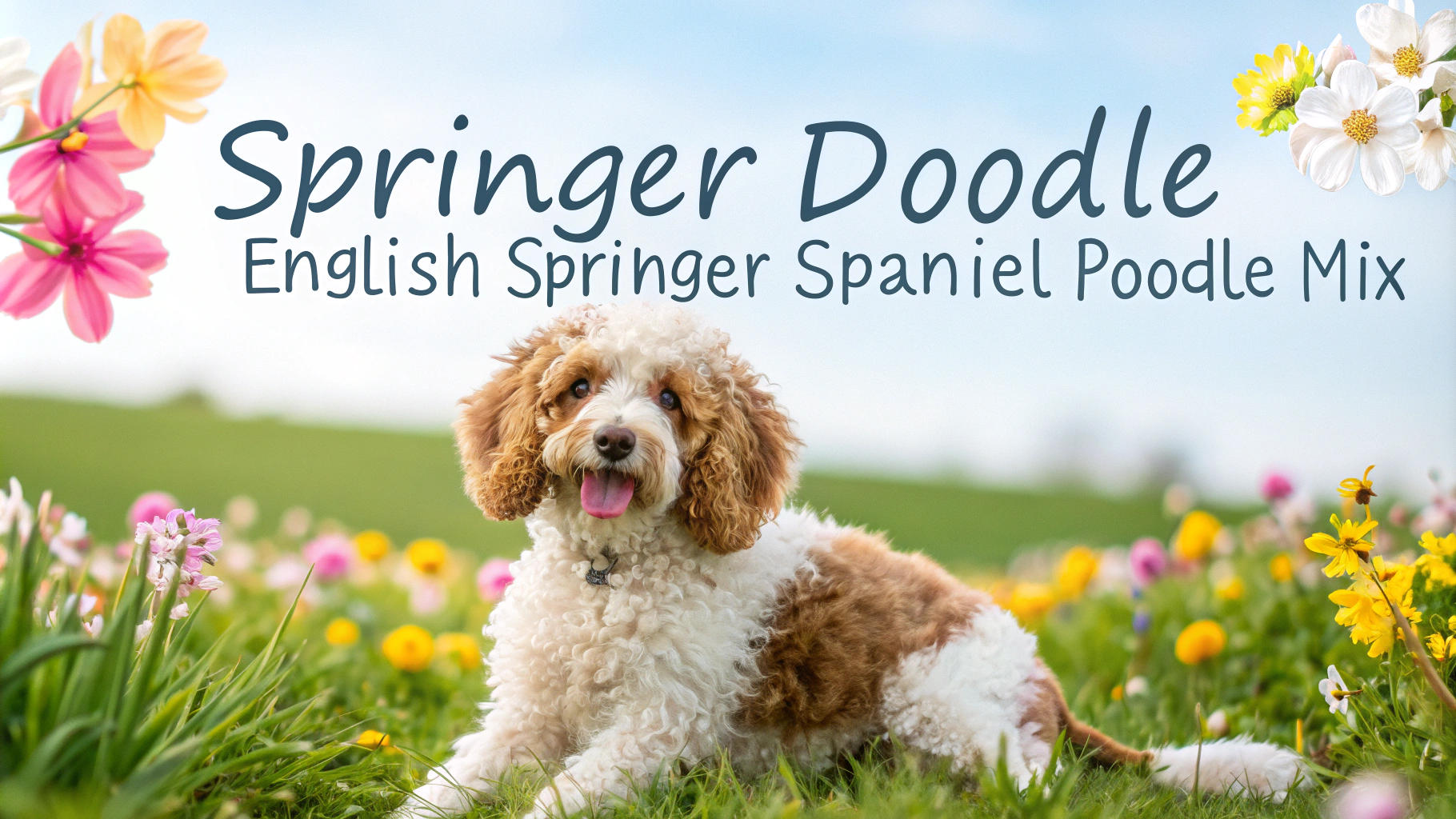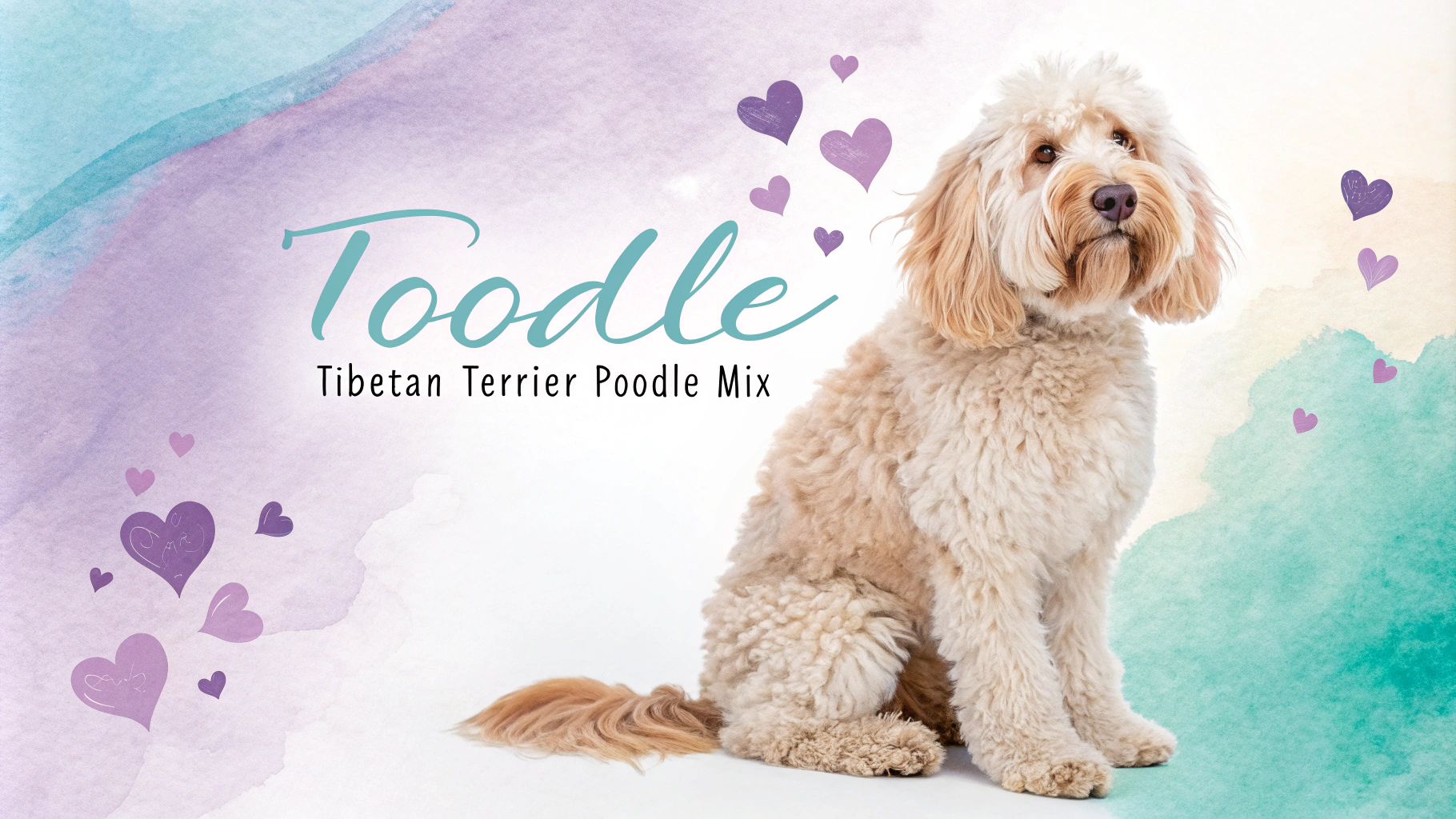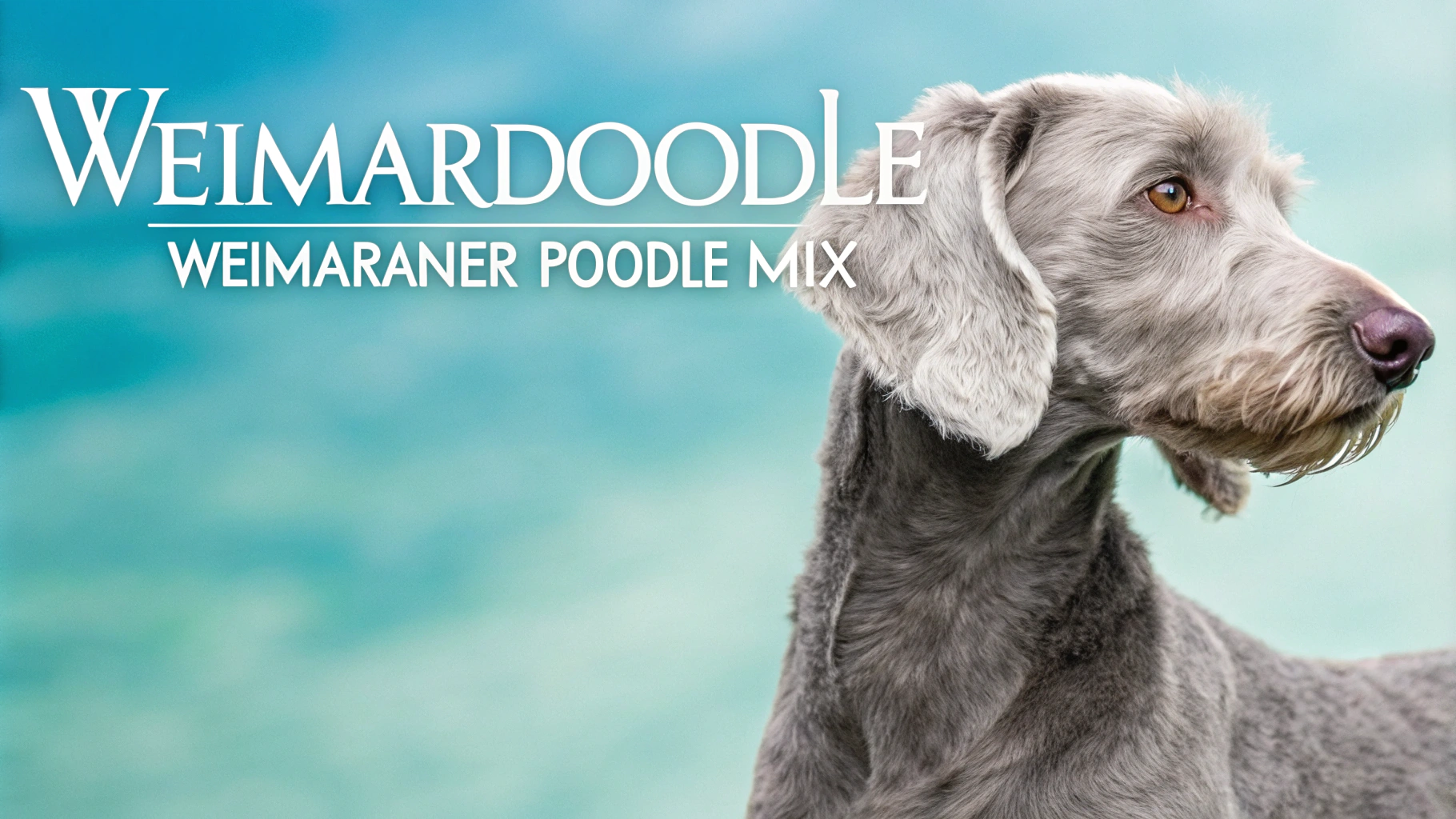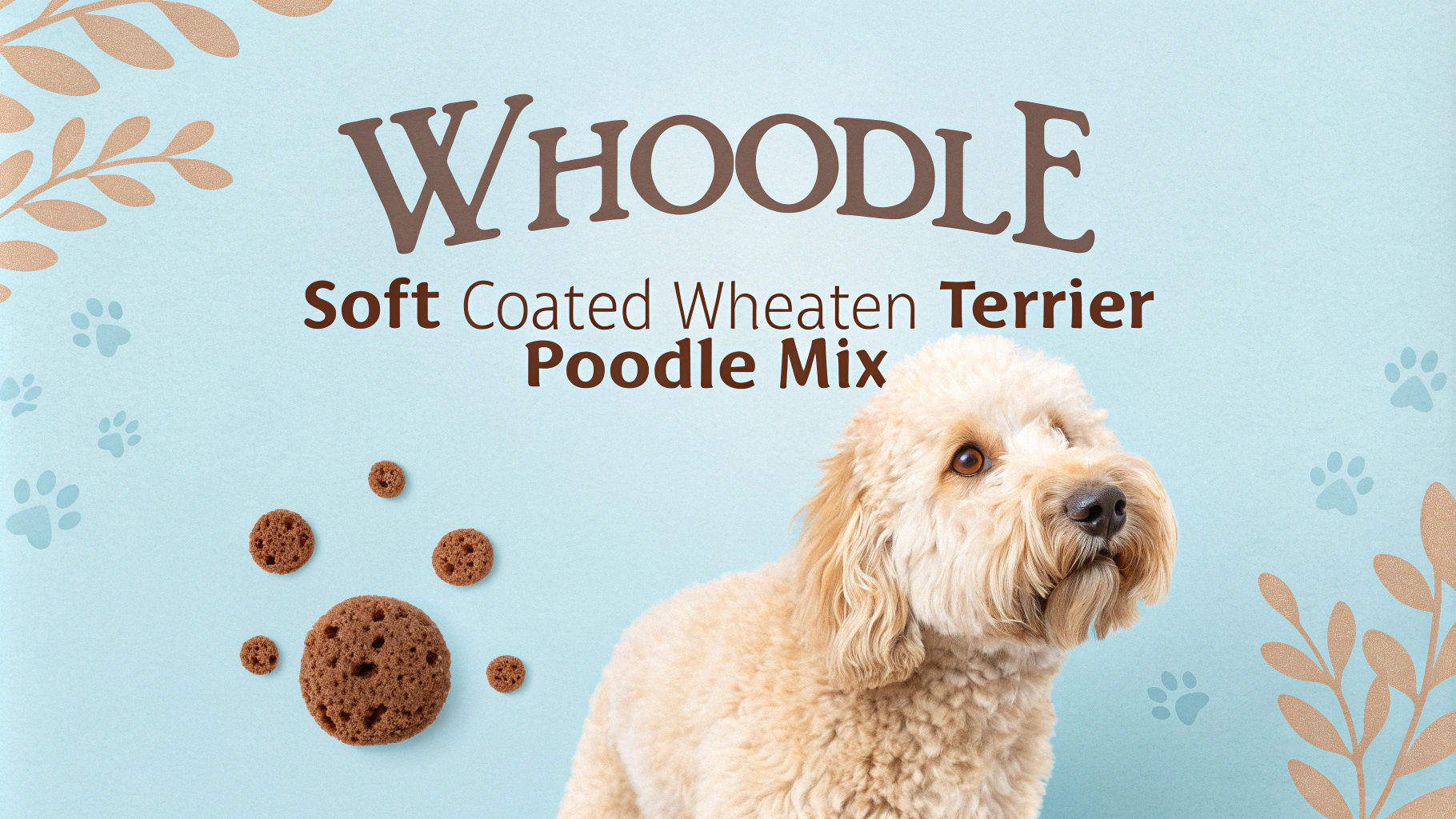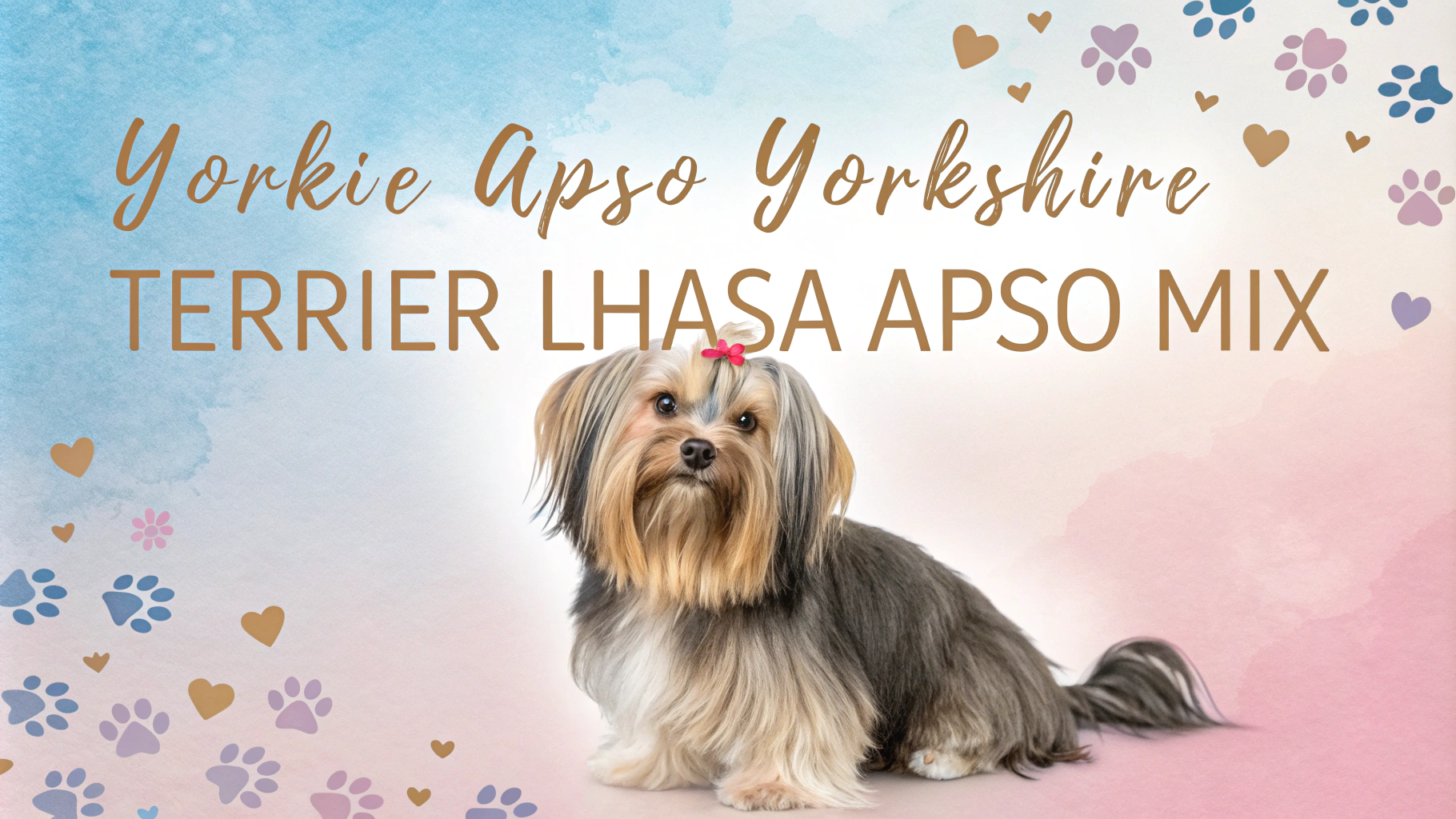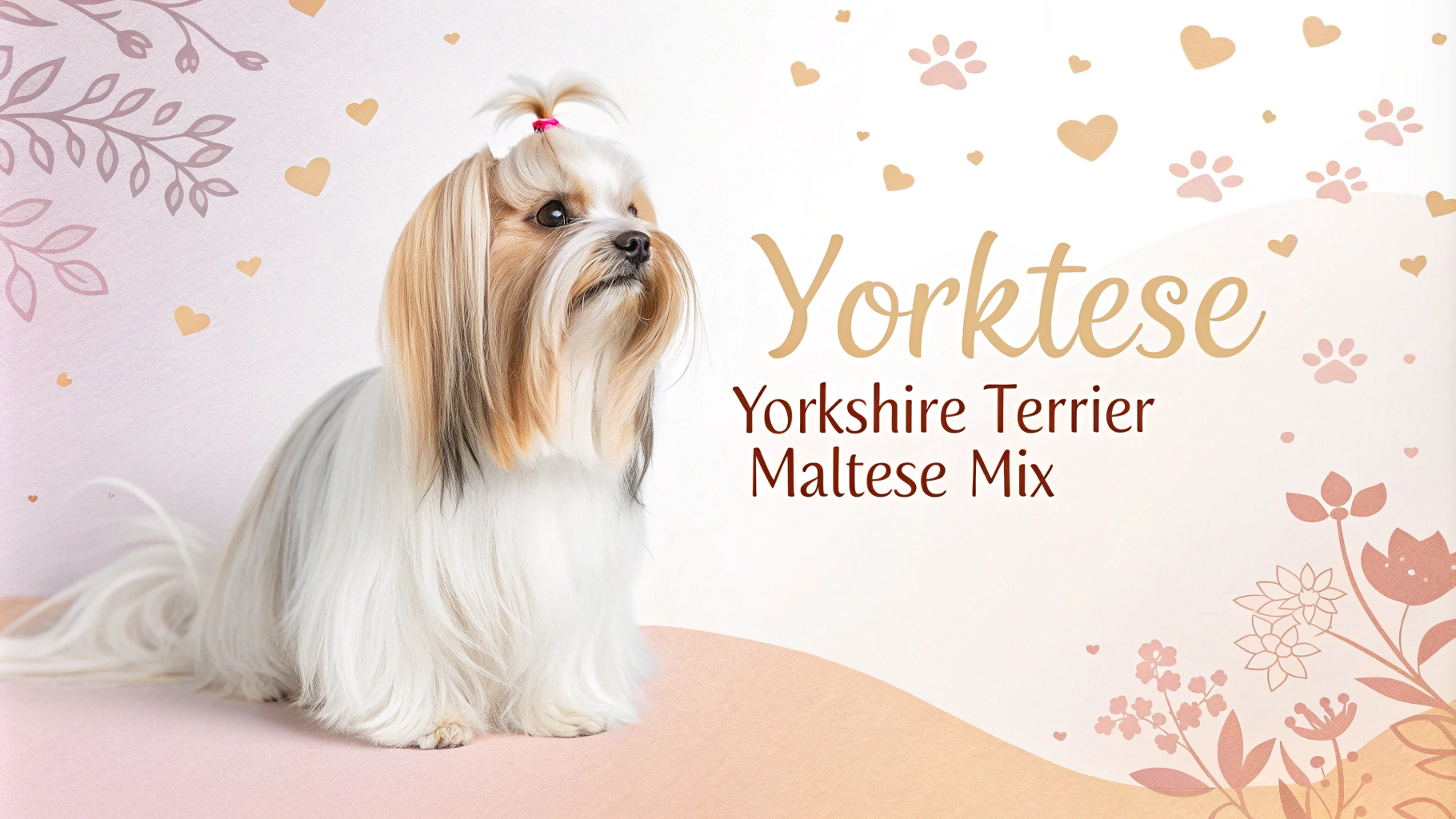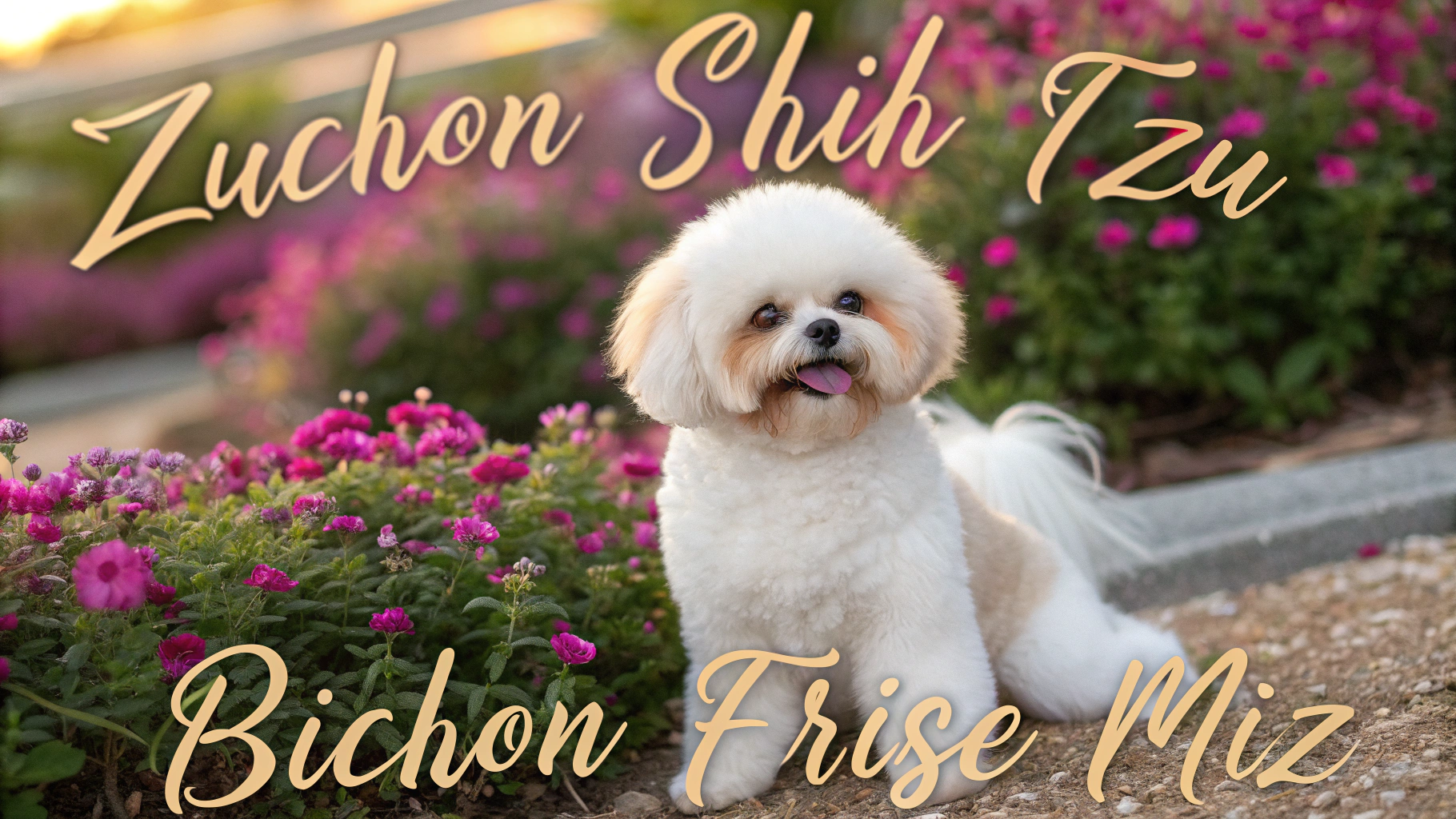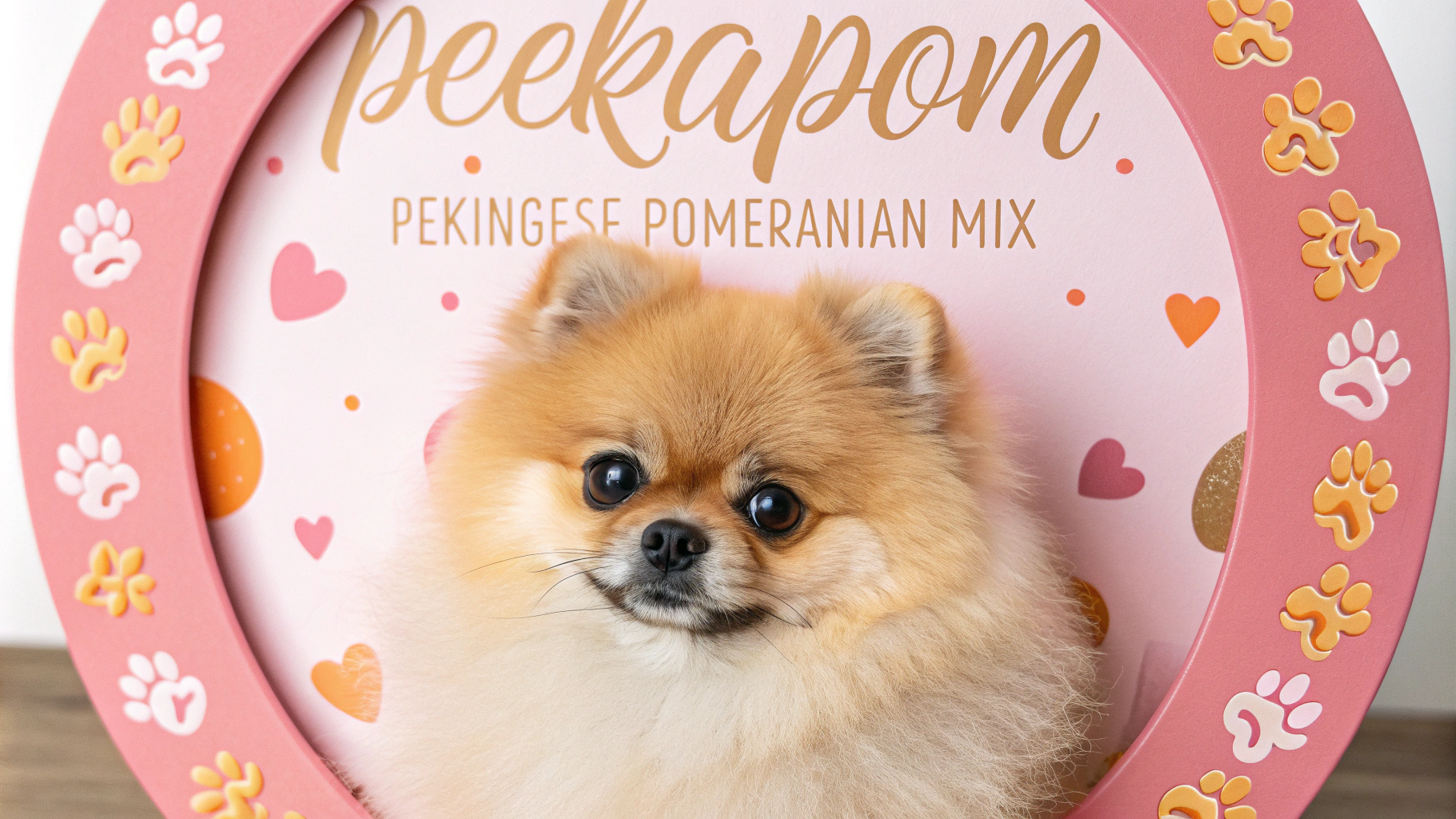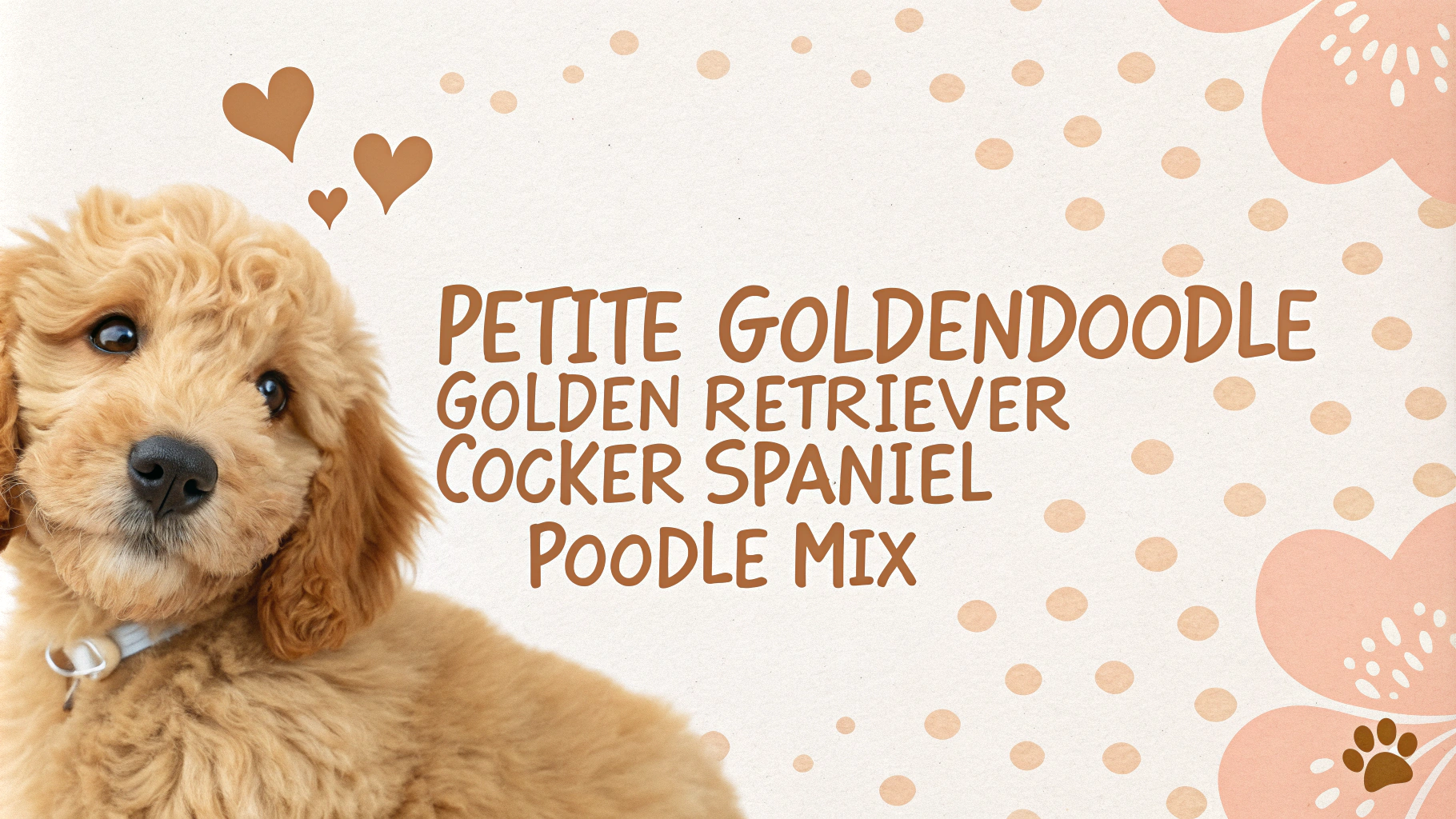Petite Goldendoodle (Golden Retriever & Cocker Spaniel / Poodle Mix)
Introduction
The Petite Goldendoodle is a designer dog breed that combines the Golden Retriever, Cocker Spaniel, and Poodle. This tri-breed mix is known for its smaller size compared to standard Goldendoodles, making it an ideal choice for those seeking a compact companion with the beloved traits of its parent breeds. Petite Goldendoodles are intelligent, affectionate, and adaptable dogs that often inherit the low-shedding coat of the Poodle, making them a popular choice for allergy-sensitive individuals. Their friendly nature and manageable size make them excellent family pets, suitable for various living situations.
Key Facts
- Size: Small to medium (15-20 inches tall, 20-35 pounds)
- Lifespan: 10-15 years
- Coat: Wavy to curly, low-shedding
- Colors: Gold, cream, apricot, red, black, or a combination
- Temperament: Friendly, intelligent, and affectionate
- Exercise needs: Moderate
- Grooming: Regular brushing and professional grooming recommended
- Training: Highly trainable and eager to please
Character Traits
Petite Goldendoodles are known for their friendly and outgoing personalities, inheriting the best traits from their parent breeds. They are typically intelligent, thanks to their Poodle lineage, making them quick learners and responsive to training. The Golden Retriever influence contributes to their gentle and affectionate nature, while the Cocker Spaniel adds a playful and energetic streak. These dogs are often described as social butterflies, enjoying the company of their human family members and getting along well with children and other pets. Petite Goldendoodles are adaptable and can thrive in various living situations, from apartments to houses with yards, as long as they receive adequate attention and exercise. Their eager-to-please attitude combined with their intelligence makes them excellent companions for first-time dog owners as well as experienced pet parents.
History & Origins
The Petite Goldendoodle is a relatively new designer breed that emerged as a variation of the popular Goldendoodle. While the exact origins of this specific mix are not well-documented, it is believed to have been developed in the late 1990s or early 2000s. The breed was created to combine the desirable traits of the Golden Retriever, Cocker Spaniel, and Poodle into a smaller package. Breeders aimed to produce a dog with the friendly and outgoing nature of the Golden Retriever, the compact size of the Cocker Spaniel, and the low-shedding coat of the Poodle. This combination was intended to create an ideal family companion that would be suitable for allergy sufferers and those living in smaller spaces. As with many designer breeds, the Petite Goldendoodle is not recognized by major kennel clubs but has gained popularity among dog enthusiasts seeking a smaller alternative to the standard Goldendoodle.
Health Concerns
Petite Goldendoodles generally inherit the health traits of their parent breeds. Common health issues may include:
- Hip dysplasia: A genetic condition affecting the hip joint
- Progressive Retinal Atrophy (PRA): An eye disorder that can lead to blindness
- Ear infections: Due to their floppy ears, they may be prone to ear problems
- Allergies: Both skin and food allergies can be common
- Von Willebrand’s Disease: A blood clotting disorder
Regular veterinary check-ups, proper diet, and exercise can help mitigate some of these health risks. It’s crucial to obtain a Petite Goldendoodle from a reputable breeder who conducts health screenings on parent dogs.
Exercise Needs
Petite Goldendoodles are energetic dogs that require regular exercise to maintain their physical and mental well-being. They typically need:
- Daily walks: At least 30-60 minutes of walking per day
- Playtime: Interactive games like fetch or tug-of-war
- Mental stimulation: Puzzle toys and training sessions
- Swimming: Many enjoy water activities, inherited from their retriever lineage
Despite their smaller size, Petite Goldendoodles have moderate to high energy levels. Regular exercise helps prevent behavioral issues that may arise from boredom or pent-up energy. Adjusting exercise routines based on age and individual needs is important for their overall health.
Space Requirements
Petite Goldendoodles are adaptable dogs that can thrive in various living situations, including:
- Apartments: Their smaller size makes them suitable for apartment living
- Houses: They enjoy having a backyard to play in
- Urban or rural settings: They can adapt to both city and country lifestyles
While they can live comfortably in smaller spaces, Petite Goldendoodles still need room to move around and play. A dedicated area for their bed, toys, and feeding station is essential. Access to outdoor spaces for regular exercise and potty breaks is crucial, regardless of the living situation. Their adaptability makes them suitable for various household types, but they thrive best in environments where they can be close to their family members.
Nutrition & Feeding
Proper nutrition is crucial for the health and well-being of Petite Goldendoodles. Key considerations include:
- High-quality dog food: Choose a brand formulated for small to medium-sized breeds
- Portion control: Follow feeding guidelines based on age, weight, and activity level
- Meal frequency: Usually 2-3 meals per day for adults
- Fresh water: Always available
- Treats: Use in moderation, not exceeding 10% of daily caloric intake
As a mixed breed, Petite Goldendoodles may have specific dietary needs or sensitivities. Consult with a veterinarian to determine the best diet plan. Be cautious of overfeeding, as these dogs can be prone to obesity. Adjust food intake based on activity level and monitor body condition regularly. Some Petite Goldendoodles may benefit from breed-specific or life-stage appropriate diets to support their health throughout their lifespan.
Grooming Tips
Petite Goldendoodles require regular grooming to maintain their coat and overall health. Their coat can vary from wavy to curly, depending on which parent breed they take after more. Brush your Petite Goldendoodle at least 2-3 times a week to prevent matting and tangling, using a slicker brush or metal comb. Pay special attention to areas prone to matting, such as behind the ears, under the legs, and around the tail.
Bathe your dog every 4-6 weeks or as needed, using a mild dog shampoo. Trim their nails regularly, typically every 2-3 weeks, and clean their ears weekly to prevent infections. Brush their teeth several times a week to maintain good oral hygiene. Professional grooming every 6-8 weeks can help maintain their coat and keep them looking their best.
If you prefer a shorter coat, consider having your Petite Goldendoodle professionally clipped every 8-12 weeks. This can make daily maintenance easier and reduce the risk of matting. Remember to introduce grooming routines early in your dog’s life to make the process easier and more enjoyable for both of you.
Training Approach
Petite Goldendoodles are intelligent and eager to please, making them relatively easy to train. They respond best to positive reinforcement techniques, such as treats, praise, and play. Start training and socialization early, ideally when they are puppies, to help them develop into well-behaved adult dogs.
Use short, frequent training sessions to keep your Petite Goldendoodle engaged and prevent boredom. Focus on basic obedience commands like sit, stay, come, and leave it. These dogs excel in activities that challenge their minds, so consider incorporating puzzle toys or agility training into their routine.
Consistency is key in training your Petite Goldendoodle. Ensure all family members use the same commands and reward system to avoid confusion. Address any unwanted behaviors promptly and redirect them to appropriate activities. Patience and persistence are essential, as some individuals may be more stubborn than others.
Socialization is crucial for Petite Goldendoodles. Expose them to various people, animals, and environments from a young age to help them become well-adjusted adults. Consider enrolling in puppy classes or obedience training to provide structured socialization opportunities and reinforce good behaviors.
